Thunder Road: Vendetta is nostalgic fun, but don’t expect anything too cerebral
As a child, I never played the original Thunder Road, but thanks to the iconic, Mad Max inspired box art, I was always curious about it. Now, thanks to Restoration Games, a modernised version of the Jim Keifer/Milton Bradley classic is available — welcome to Thunder Road: Vendetta.
Before I go too deep, I just want to quickly mention that this review is for the base game of Thunder Road: Vendetta only. There’s already a retail expansions bundle available, and there is a stupidly expensive Kickstarter Edition of Thunder Road: Vendetta which comes with the moniker of being the “Maximum Chrome” edition. I haven’t played any expansions and I don’t have access to the fancier components, so please be aware of that when reading this review and considering any purchase.
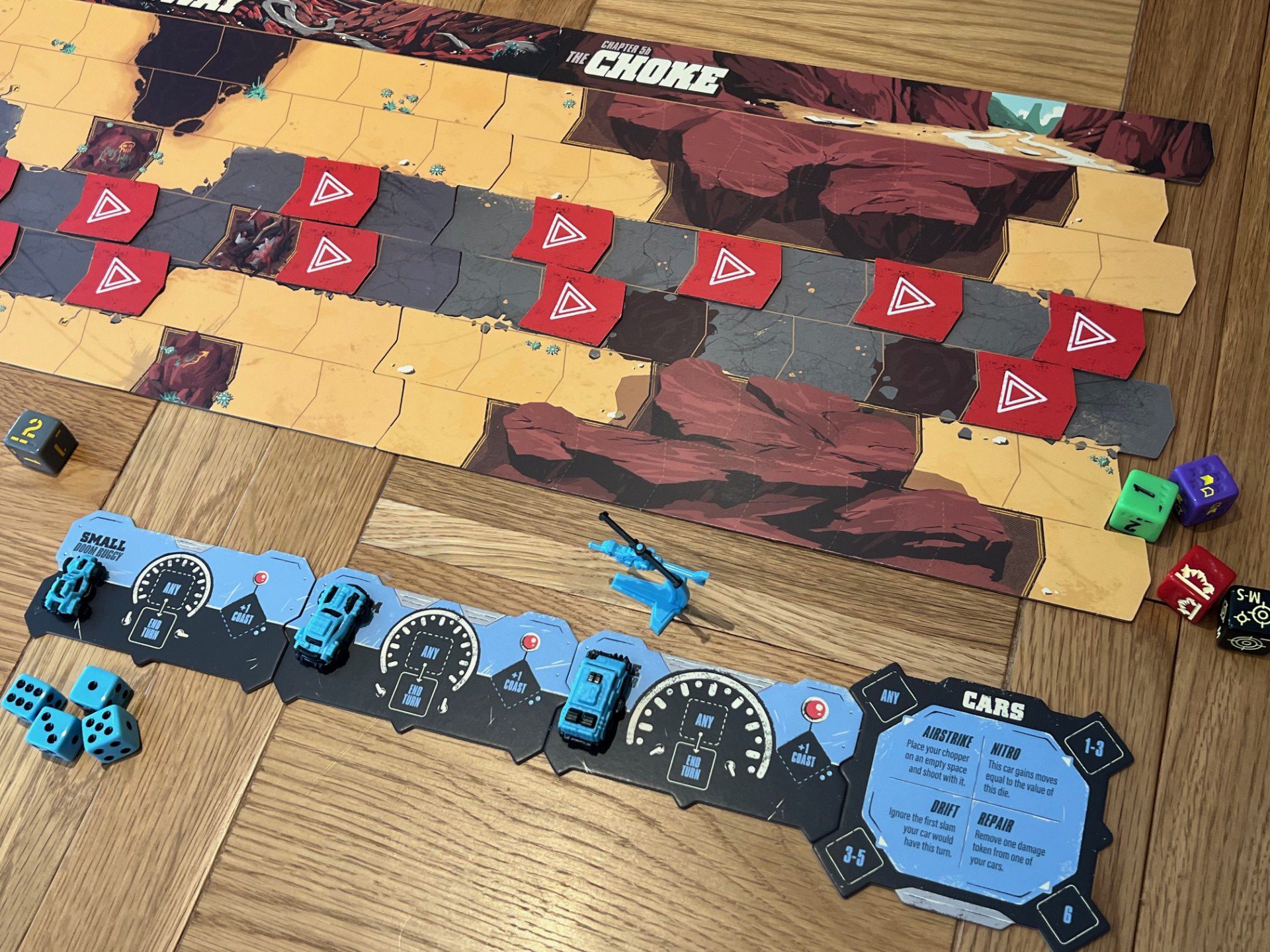
Reflecting the above, the content of Thunder Road: Vendetta is fairly spartan — which is both a blessing and a curse. On the one hand, this keeps the base price for Thunder Road: Vendetta to a fairly reasonable level, whilst also maintaining a very straightforward entry point for the game. On the other hand (as I’ll come to later) the content here is fairly basic, and appeal is probably quite limited for hobby gamers as a result.
The basic concept of Thunder Road: Vendetta is super simple — you have three cars in a race, and you need one of them to reach the finish line first. Cars can be destroyed and completely removed from the game, and there is the potential for player elimination here — although the Restoration Games version of Thunder Road introduces mechanisms to keep cars in the race longer and to bring the race to a close sooner when someone does drop out.
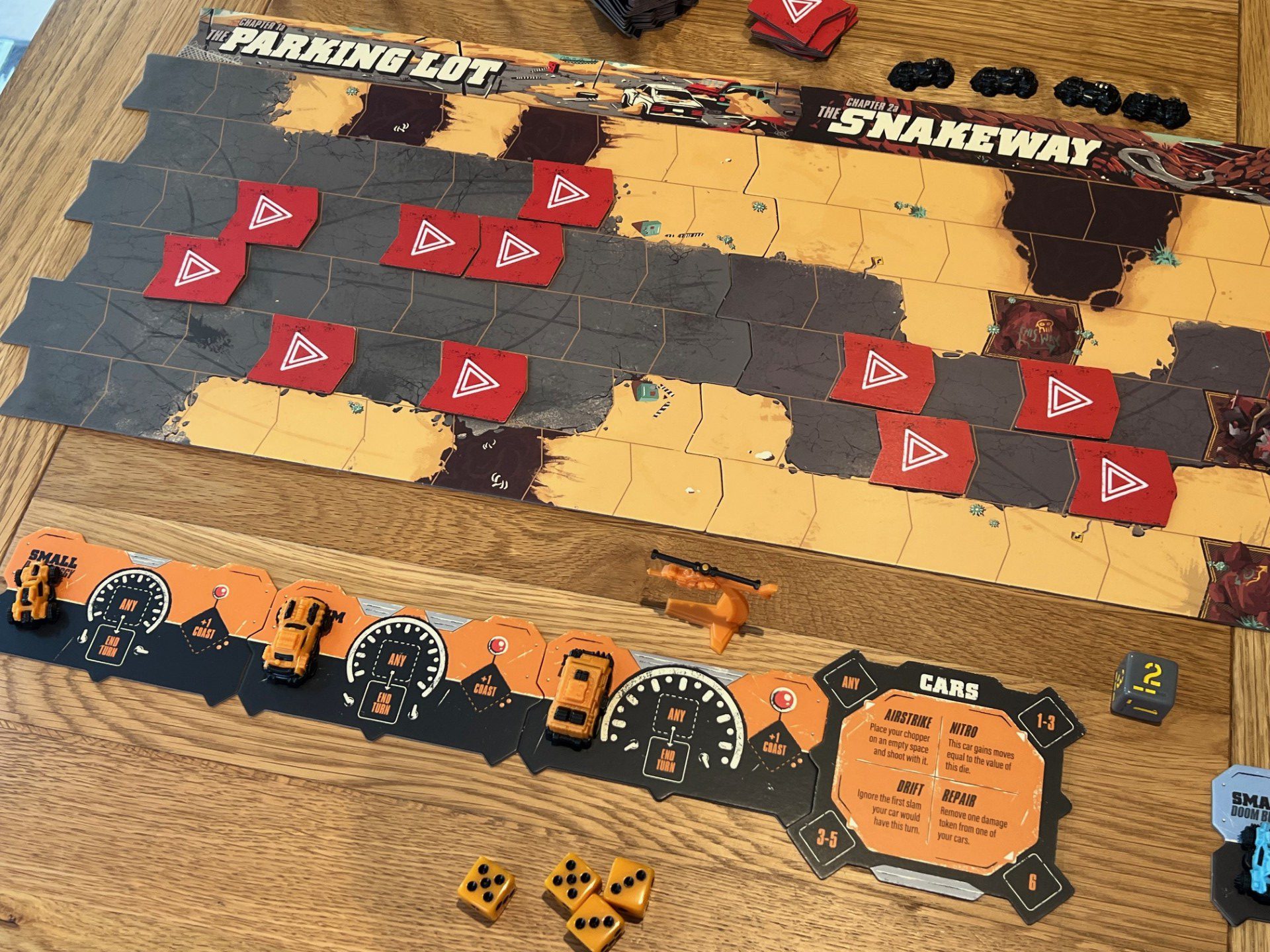
Thunder Road: Vendetta includes a modular board made up of five dual-sided sections. These can broadly be randomised however you wish, although beginners will probably want to use side 1a, 1b (and so on) for their first few races. On each section of track, there will be some road, some dirt, some hazards (drawn at random from a stack of tiles) and possibly some printed hazards such as oil slicks or canyon walls.
On their turn, a player will assign one of their four dice (rolled at the start of the round) to one of their active cars. That car will then move that many spaces — potentially modified by things on the track and the road die, which confers a communal bonus given to any car that stays on the road for all their moves this round. Reaching the same space as another car will cause a slam (which stops movement), whilst hitting a hazard tile will cause that hazard to flip and take effect.
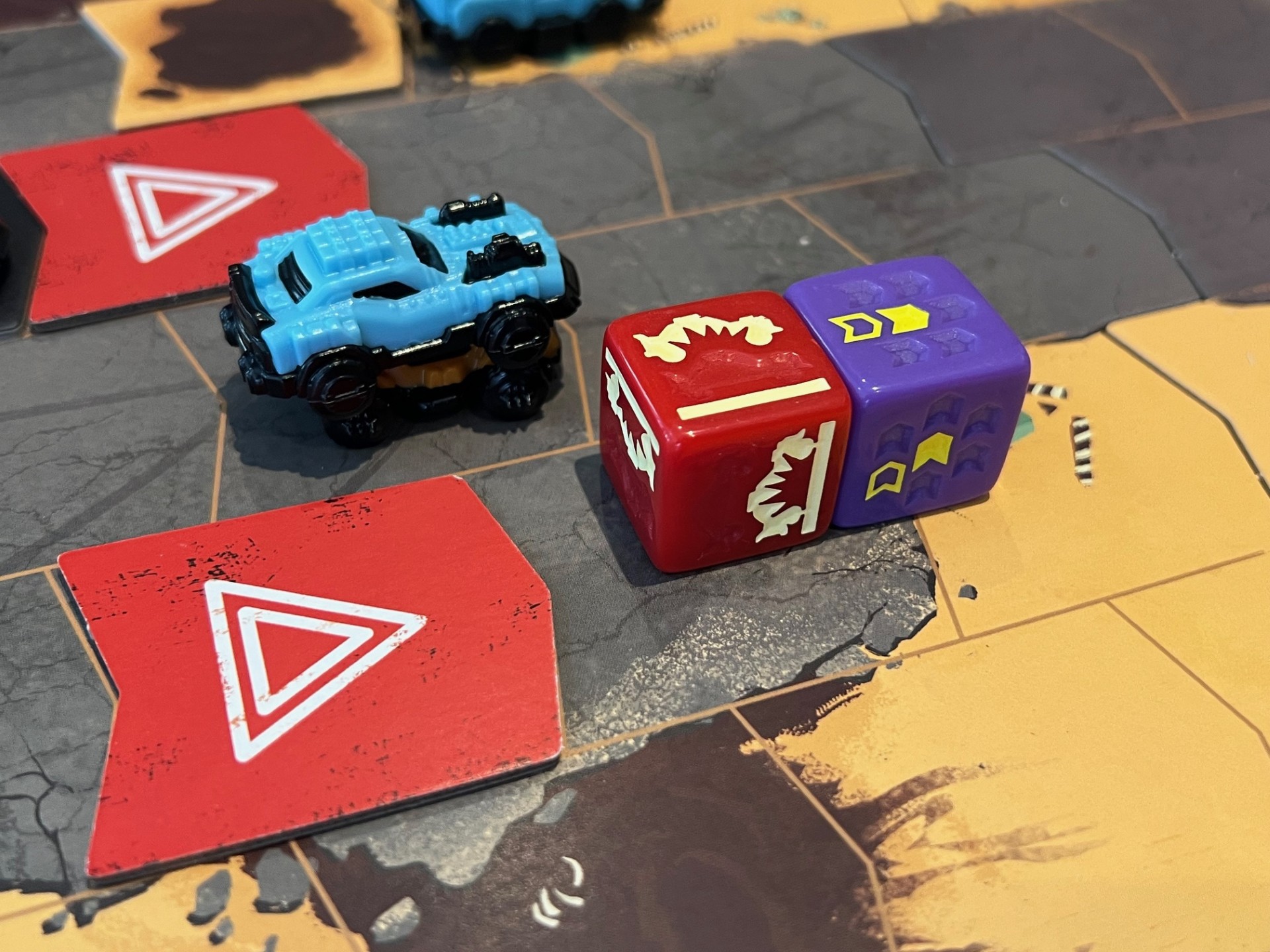
It’s also possible for the player to assign their extra, fourth die to one of the four bonus actions – which include extra movement for a car or the ability to “drift” around another car, or to repair one of two damage slots on a single car. The final and perhaps most powerful bonus action is the ability to call in an airstrike, which brings in an allied helicopter anywhere on the board – and allows it to take a shoot action at a car in front of it.
There are various factors that can cause a car to lose control, including being slammed, being shot or hitting an oil slick. When one of these things happens (and the effects and resolution do vary slightly for each one) a car will ultimately end up rolling one or more dice to determine which direction it loses control in. When cars slam, either car could be the one to lose control, but due to the way the dice are loaded, larger cars will typically win out over smaller cars.
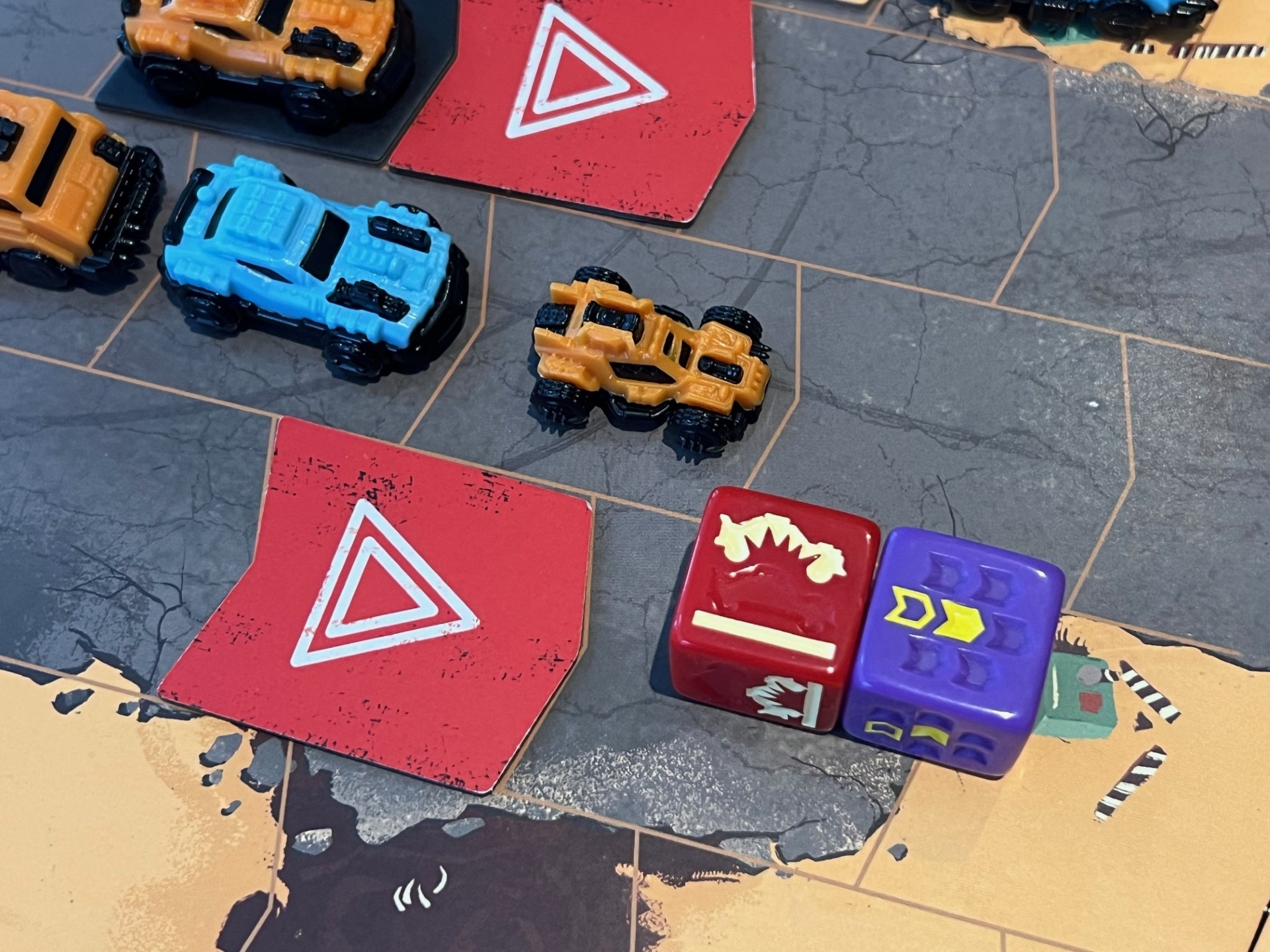
Cars that end up crashing into other features, or which take damage from a hazard (for example when driving over a mine) will need to draw a token from the damage stack. These tokens often result in further losses of control or modifiers that are almost always undesirable. The best you can hope for is something like a “dent” which is pretty much just a vanilla damage card.
As the players progress along the track from left to right, there will always be three sections of track in place. Should a further section ever need to be placed to the right of the current one and one or more cars are on the first (furthest left) track section, then they are eliminated. Equally, if any card would take a third damage token, it is eliminated.
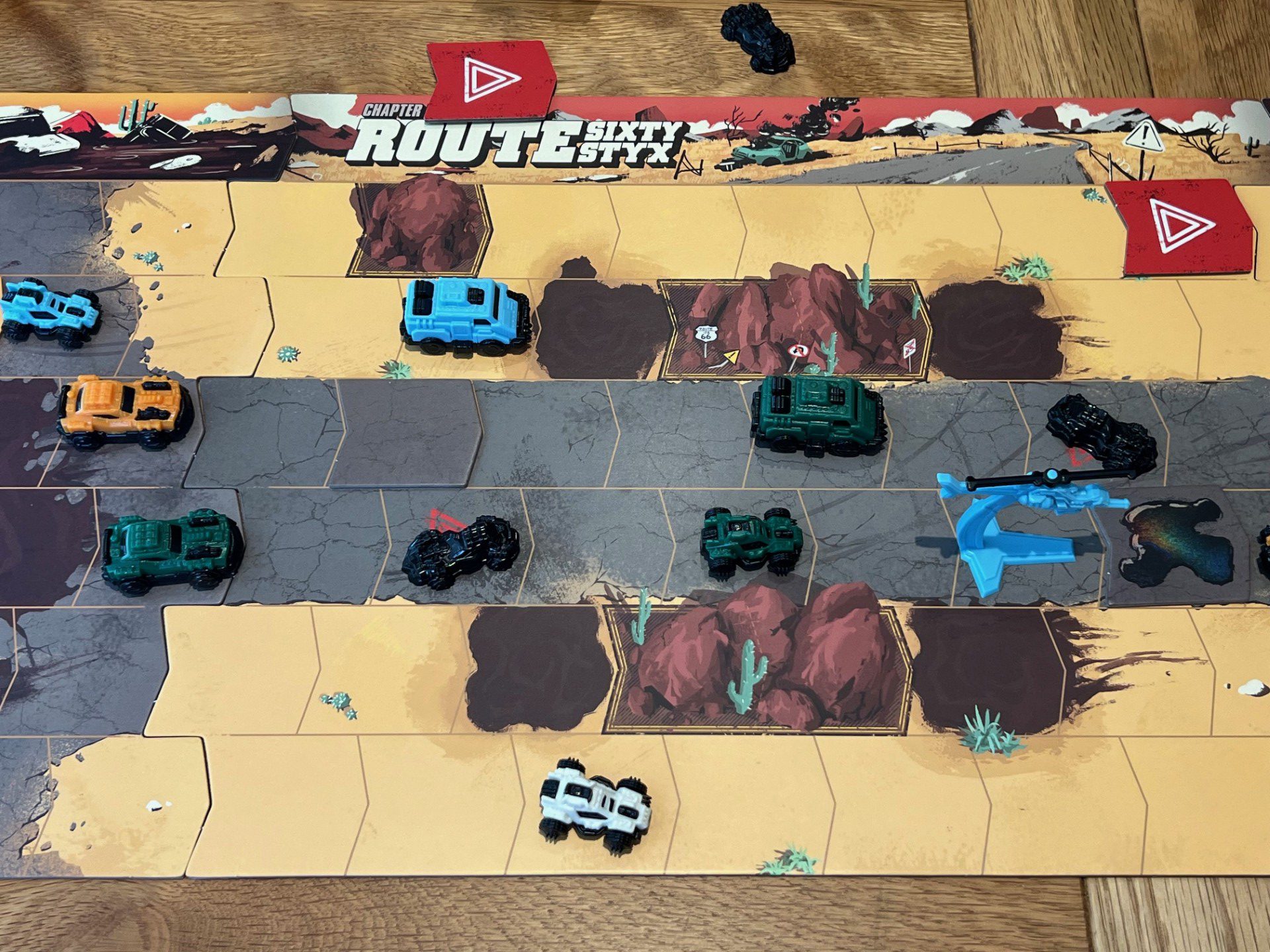
The game end is triggered whenever the players reach the fifth track section (in a two player game), or when one player has all their cars eliminated (in a multiplayer game). In either case, the finish line is then added to the right of the current track section and whoever has a car reach it first is the winner. I don’t always love this as it can mean a player is literally one turn away from the end and no one can stop them, so we added the house rule that we’ll add another tile if there is a player within four spaces of the end of the last tile.
Generally, Thunder Road: Vendetta is very much a light, non-thinky experience that involves a lot of dice, a lot of luck and a lot of off-board shouting and gesticulating. If you’re trying to overthink your moves in Thunder Road: Vendetta, then you’re not playing it right. Played that way, there’s a lot of fun to be had here – with lots of randomness in every action, from simply moving to making the conscious choice to either shoot or slam an opponent. This means that even your best or most optimal move could result in disaster — for you or your opponent.
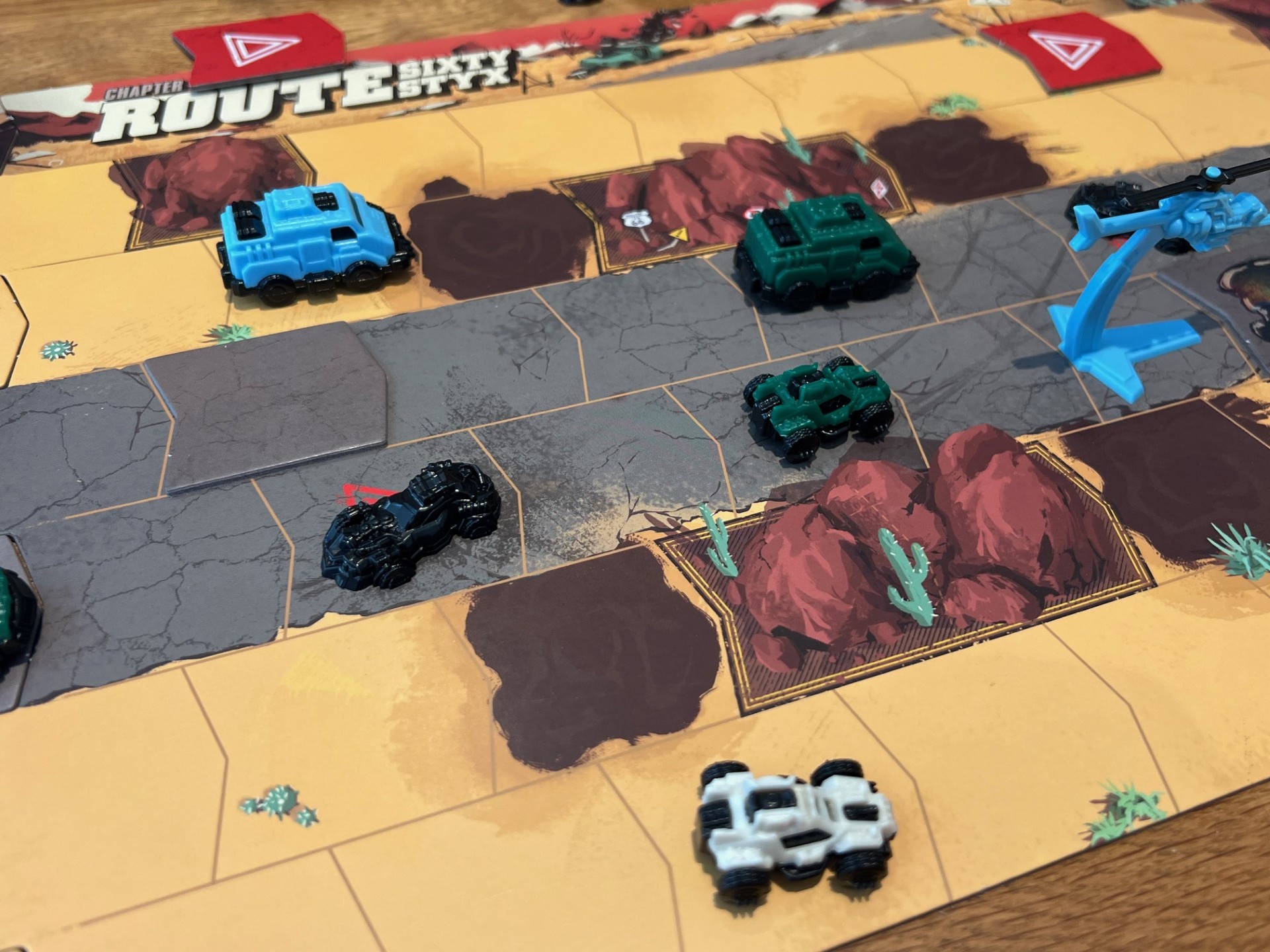
That same randomness is what will kill Thunder Road: Vendetta for a lot of people out there. Whether you prefer your games more thoughtful or you simply hate having chance dictate the outcome, Thunder Road: Vendetta is determined about half by your decisions and about half by the outcome of randomness such as token draws and especially die rolls. This will be intolerable for some — but as always it’s about context, audience and setting.
I enjoy Thunder Road: Vendetta with a number of my friends who like lighter games, and as a minor distraction before, after or between bigger games on my more serious game nights. As I mentioned right at the start, there is certainly a lot more complexity and variety to access in the expansions and Kickstarter variants of Thunder Road: Vendetta, but in some ways, I think the basic experience is probably cleaner and simpler — which may have its own benefits for a game of this kind.
You can purchase Thunder Road: Vendetta on Amazon.
Love board games? Check out our list of the top board games we’ve reviewed.
Comments are closed.